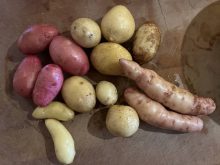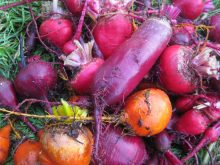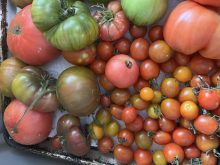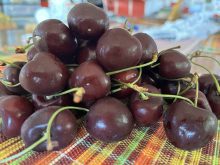To most of us, salad is the ultimate summer fare. We wait all year for freshly harvested salad greens, making do through fall, winter and early spring with the robust and sturdy greens of those seasons, but summer means salad. We love the tenderness, the crunch, the colours and the very idea of lettuce. It epitomizes summer at its simplest, like cherries and tomatoes.
In fact, salad greens aren’t really ideal high-summer plants — they bolt and become bitter in high heat. So, when the dead of winter hits and salad greens at the store are the price of frankincense and myrrh, it’s time to plant an indoor garden.
I bought a set of indoor plant lights last fall but ignored them for a long while —until this fall and winter, when food prices spiked. Then I hauled a pair of raised planters into the house and waited for the soil to thaw and warm. As it happens, the local CBC radio station still has a noon phone-in show, and on one frozen December day the guest was Patricia Hanbidge, a horticulture expert who grows greens, herbs and vegetables indoors during the winter.
Read Also
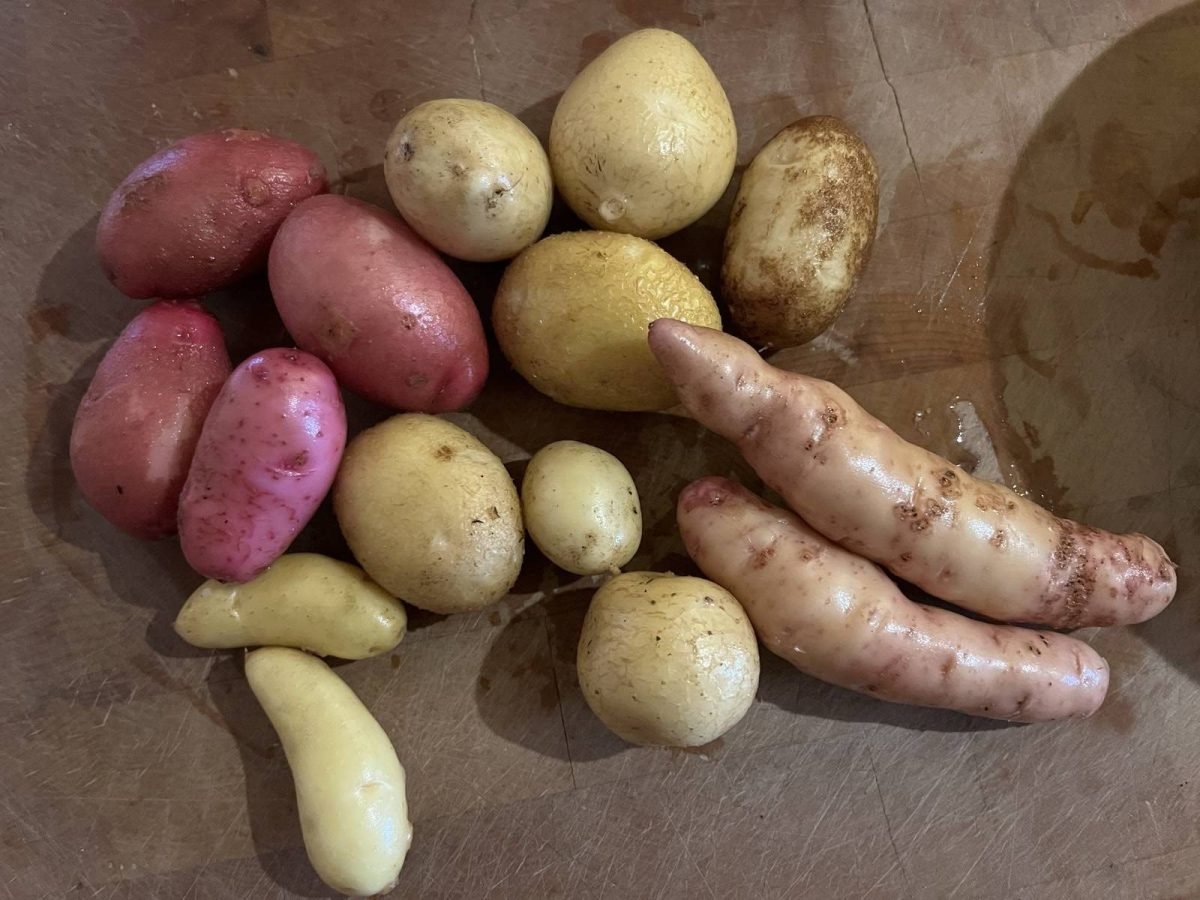
Putting down roots, part 2: Potatoes
Saskatchewan author and chef dee Hobsbawn-Smith offers a retrospective on the potato’s cultural journey from the Americas to Europe and back, and a recipe for butter-basted baby potatoes with rosemary.
Hanbidge made it sound easy, so I dug out my seeds and trowel and got started. I cleaned out the debris from the planters and sorted through my seeds. Thus far, I have chosen “cut-and-come-again” varieties of salad greens rather than heads, as well as herbs.
I like greens that are not necessarily green, and not just lettuce. In recent years, menus and markets have been flooded by mesclun, or “mixture.” Originally from Nice in the south of France, mesclun was a specific blend of plants in particular proportions. Traditionally it tended towards the bitter side of the flavour profile, with endive, dandelion and sometimes arugula, bolstered by cress, chervil and leaf lettuce and spinach, rainbow chard, mizuna, chard, mustard greens, dandelion, frisée, radicchio and sorrel.

Some growers add other plants to the mix, aiming for a mixture of flavours, colours and textures, encompassing sharp, bitter and sweet. Herbs can make their way into the mix, like mint, tarragon, basil, parsley, sorrel, chive blossoms and chervil.
I do like lettuces — lollo rosso or red leaf, red oakleaf, butter lettuce and beet tops — but beyond that I like tiny fennel fronds waving in the breeze of the fan, the magenta points of miniature oracle, or orache, tiny Bull’s Blood beet tops stained red, purslane, fat leaves of tatsoi, mizuna.
Somewhere on the Prairies, your favourite greens — or purples — are being grown for this winter’s salad bowl. So first we eat, then we weed.
Wintry Bitter Greens and Blue Cheese Dressing
Some bistro salads, like murder mysteries, are classics of the genre. This one combines salty blue cheese, crisp bitter greens and bacon (optional). Add the suave flavour of nut oil and some toasted nuts for a true experience of la vie française. Serves 4
- 4 slices bacon, diced
- 6 cups loosely packed frisée, arugula or a mixture
- 1 cup crumbled roquefort or another good blue cheese
- 1/4 cup toasted walnut halves
- 1 tablespoon sherry vinegar
- 1 tablespoon red wine vinegar
- 1/3 cup extra virgin olive oil (or to taste)
- 1 tablespoon walnut or hazelnut oil
- Sea or kosher salt and freshly cracked black pepper to taste
- 4 soft-poached eggs for garnish
Cook the bacon over medium-high heat until crisp, stirring often. Drain, reserving fat for another use. Put the salad greens and cheese into a large bowl and mix gently. Add the bacon and walnuts. Mix well. Add the remaining ingredients, toss thoroughly and serve with soft-poached eggs on top or beside.
Pear and Chive Vinaigrette
For those who do not like blue cheese, here’s a great wintertime variant.
This vinaigrette is the Jekyll and Hyde of the salad world — it can be mild and delicate, or it can be pungent with wasabi, the brash horseradish paste so dear to sushi fans. The strength of the dressing will dictate where it is used. In its most pungent form, serve this vinaigrette with grilled swordfish or tuna. In its kinder, gentler incarnation, serve with tender greens, grilled white fish, asparagus and rice salads.
- 1 pear, peeled and sliced
- 1/4 cup olive oil
- 1 tablespoon grated fresh ginger root
- 2 tablespoons melted honey
- 1 teaspoon to 2 tablespoons wasabi or horseradish, rehydrated
- 1/3 cup sherry vinegar or Japanese rice vinegar
- 2 tablespoons minced fresh chives
- Kosher salt and hot chili flakes to taste
Fry the pear slices over high heat in a small amount of the oil. Allow the slices to brown, turning as needed. Put through a food mill or purée in a food processor. Add remaining ingredients and whisk well.



